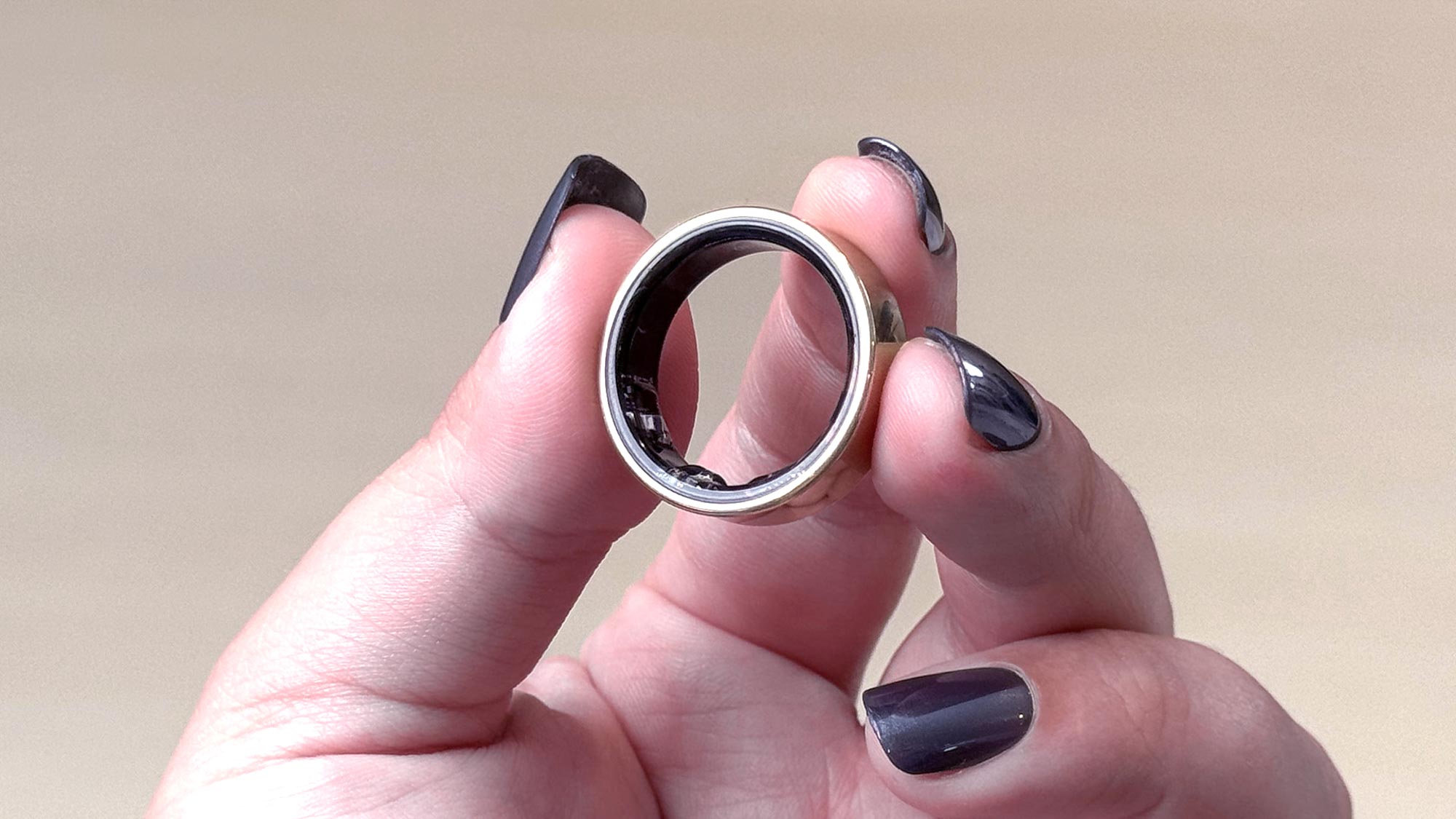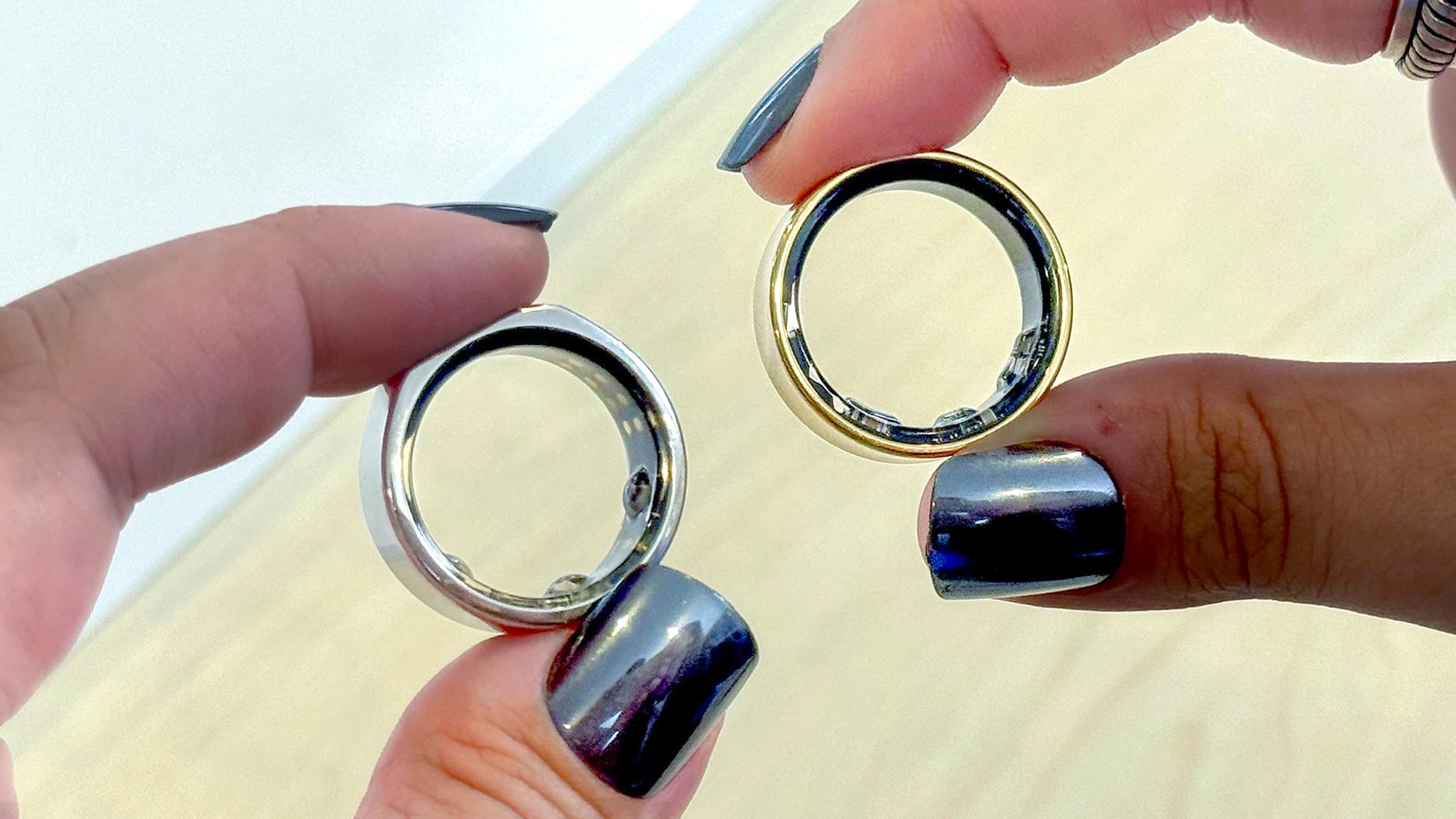Samsung Galaxy Ring: Everything we know about the new smart ring
The Samsung Galaxy Ring will ship later this month

Updated July 10
• Galaxy Unpacked is happening today and our live blog is covering all the details as they happen.
• We got some hands-on time with the Galaxy Ring; here are our initial impressions.
• Following the launch, these are our favorite health and fitness tracking Galaxy Ring features.
Our Samsung Galaxy Unpacked live blog is up and running. Check it out now to see all the big news.
The Samsung Galaxy Ring was announced at Samsung Unpacked 2024 on July 10. It's the company's first smart ring and will capture important health metrics, including sleep, heart rate, blood oxygen, skin temperature, and workouts, with AI insights in the Samsung Health app.
As expected, the Galaxy Ring looks set to be a major competitor to the Oura Ring, the current market leader, and one of the best fitness trackers available right now. But you'll need a Samsung smartphone to use the ring, while the Oura Ring works with Android and iPhone.
We got some hands-on time with the Galaxy Ring at Unpacked, and we were impressed with the look, feel, and comfort of the ring. It comes in three colors (black, silver, gold) and is available to pre-order right now for $399.
Samsung Galaxy Ring cheat sheet
- Release date: Preorder from July 10, late July release
- Price prediction: $399
- Wellness features: Heart health monitoring, sleep tracking, "Vitality" score, skin temperature monitoring, period predictions
- Smart features: Compatibility with Galaxy devices, gestures
- Design: Available in black, gold and silver, eight sizes (5-12)
- Battery sizes: 17 mAh, 18.5 mAh and 22 mAh
Samsung Galaxy Ring: launch date
The Galaxy Ring had its first official announcement at the Galaxy Unpacked summer 2024 event, which is happened today, July 10, with preorders opening the same day with an expected shipment date at the end of July.
The Galaxy Ring made its initial appearance — however brief — at Unpacked 2024, alongside the Galaxy S24 and S24 Ultra, with no initial details on a launch date or features. The company subsequently showed off the ring at Mobile World Congress in February without providing additional details.
Samsung trademarked the name Galaxy Ring back in February 2023, along with a bunch of other names that could either refer to features of the ring or other products entirely. As for a release date, Samsung provided a pretty big clue on its own, when it filed a pre-emptive legal challenge to Oura.
Sign up to get the BEST of Tom's Guide direct to your inbox.
Get instant access to breaking news, the hottest reviews, great deals and helpful tips.
Samsung believes the makers of the Oura Ring will claim that Samsung is violating its trademarks with the Galaxy Ring, and wants a court to find that any disputed technology involves "features common to virtually all smart rings." In that lawsuit, Samsung indicates that the Galaxy Ring will ship in or around August.
Samsung Galaxy Ring: How much does it cost?
The Samsung Galaxy Ring retails for $399, almost $100 more than the Oura Ring Gen-3. However, you won't need a subscription to use the Galaxy Ring, while you need a $6/month subscription to use the Oura Ring.
So, in the long-run, the Galaxy Ring may be the cheaper option, although you'd need to have a Samsung phone to begin with. Meanwhile, Oura works with your existing phone, whether that's a Samsung, Android, or iPhone.
In the run up to Unpacked, we didn't any indications of how much the Samsung Galaxy Ring would cost, but we took some educated guesses based on the price of other smart rings currently on the market.
For starters, the Galaxy Ring's presumptive competitor, the Oura Ring, costs $299 at Best Buy. Other smart rings, such as the Circular Pro 1, costs $410, and the Ultrahuman Ring AIR comes in at $349 on Amazon.
With those in mind, were surprised by the $400 price tag, especially since well-known leaker Yogesh Brar pegged the cost of the Galaxy Ring at between $300 and $350. Fortunately, Brar's prediction that you'd need a $10/month subscription to use all the features didn't come to pass.
Samsung Galaxy Ring: Design

Quite obviously, we expect the Galaxy Ring to be, well, a ring. And Unpacked wasn't our first time laying eyes on the ring, as we saw the Galaxy Ring earlier in the year — as mentioned, it was on display at MWC 2024 in February — so would could confirm that's exactly what you're getting with this wearable.
The finger-based wearable is available in eight sizes — specifically ring sizes five through 12 — and weighs roughly three grams, which makes it considerably lighter than the current-gen Oura Ring.
At the Galaxy Ring's public showing during MWC 2024, we learned the wearable will feature three colors — black, gold, and silver. And Unpacked, as at MWC, we found the gold and silver options to be particularly striking in person.
Samsung Galaxy Ring: Battery life
Battery life is a key component of a smart ring and a big reason people may choose one over a smartwatch, especially watches that must be charged every couple of nights. The Oura Ring currently lasts up to a week on a single charge and Samsung will need to at least match, if not better, this longevity.
The wearable comes with three different battery sizes depending on which size of ring you opt for. Larger models will offer more room for battery capacity with the battery sizes quoted as 17 mAh, 18.5 mAh, and 22 mAh and the largest size (with the 22 mAh battery) should last up to 7 days with regular use.
This isn't quite as promised — Samsung teased that it would last up to nine days, comfortably outperforming the Oura. But, of course, that number will depend on features, so, we'll have to do some testing before we can say for sure how long the Galaxy Ring will last.
Samsung Galaxy Ring: Health features
The Galaxy Ring might not be as big as full-on fitness trackers, but it still packs an optical heart rate sensor, blood oxygen monitor, skin temperature sensor, and an accelerometer. These track your activity and metrics throughout the day, and the data syncs via Bluetooth to the Samsung Health app.
Thanks to these sensors, the Galaxy Ring can monitor your heart rate, use the accelerometer to assess the quality of your sleep and automatically track workouts, and measure your skin temperature, which leads into the Ring's period tracking feature.
As for sleep, your overnight data is recorded for analysis in the Samsung Health app, with AI-powered insights and advice on how to improve your sleep. Plus, this data feeds into your Energy Score — a single metric based on your sleep, recent workouts and recovery, and daily activity.
Since the ring can track your skin temperature, the Health app uses this data to track when you're on your period and to predict when your next one might be. This analysis is powered by the fertility app, Natural Cycles, but with a twist.
Natural Cycles is FDA-cleared as a form of contraception, but Samsung's implementation only covers the period tracking element, and not the fertility or pregnancy elements. It's an unusual decision.
Meanwhile, you can connect your Oura account to Natural Cycles to get the full experience, but you'd need an Oura and Natural Cycles membership (total $20 per month), whereas there's no fee for Samsung's service.
Samsung Galaxy Ring: What we hoped we'd see
There have been relatively few smart rings thus far, but from what we've seen (and tested), in the lead up to Unpacked, we hoped that the Samsung Galaxy Ring would have the following:
Activity tracking: This came to pass, with automatic workout detection, with data passed seamlessly to the Samsung Health app.
Advanced sleep tracking: We won't know until we've spent a while with the ring how it stacks up against Oura (which is excellent at sleep tracking), but the details we have so far look good.
Temperature tracking: We originally said that if the Galaxy Ring could keep tabs on your temperature, it would not only help you know if you were coming down with something but could also be helpful for women who want to track their cycles and pregnancy. This was only partially right, as the Galaxy Ring can track temperature and periods, but not pregnancy or fertility.
Media control: Reports suggested that the Galaxy Ring would be able to control other devices. Again, this was only slightly accurate, as the Ring has gesture support for operating your phone camera's shutter and dismiss alarms. Useful, but not exactly essential.
Tap to pay: This was on the moonshot list, since Oura doesn't have this either, but we were hoping to see NFC support on the Galaxy Ring for contactless payments. Maybe next time.
Samsung Galaxy Ring: Outlook
Samsung launching into a new wearables category certainly is interesting; the brand is entering a market with relatively few competitors, giving it a first-mover advantage over the likes of Apple and Google. Although we still don't know how the Galaxy Ring will stack up against the Oura Ring.
The device could appeal to those who want a health-focused wearable but don't want something as large as a watch. In that way, it could carve out a separate market away from smartwatches, where it has to compete with the Apple Watch, not to mention Garmin.
The Samsung Ring might also be an entry point into the company expanding its online health and fitness offerings into both free and paid tiers, much like what Apple and Fitbit/Google have done.
More from Tom's Guide

Dan Bracaglia is the Tom’s Guide editorial lead for all things smartwatches, fitness trackers and outdoor gear. With 15 years of experience as a consumer technology journalist testing everything from Oura Rings to instant cameras, Dan is deeply passionate about helping readers save money and make informed purchasing decisions. In the past year alone, Dan has assessed major product releases from the likes of Apple, Garmin, Google, Samsung, Polar and many others.
An avid outdoor adventurer, Dan is based in the U.S. Pacific Northwest where he takes advantage of the beautiful surroundings every chance he gets. A lover of kayaking, hiking, swimming, biking, snowboarding and exploring, he also makes every effort to combine his day job with his passions. When not assessing the sleep tracking and heart rate accuracy of the latest tach gadgets, you can find him photographing Seattle’s vibrant underground music community.
- James FrewBuying Guide Editor

